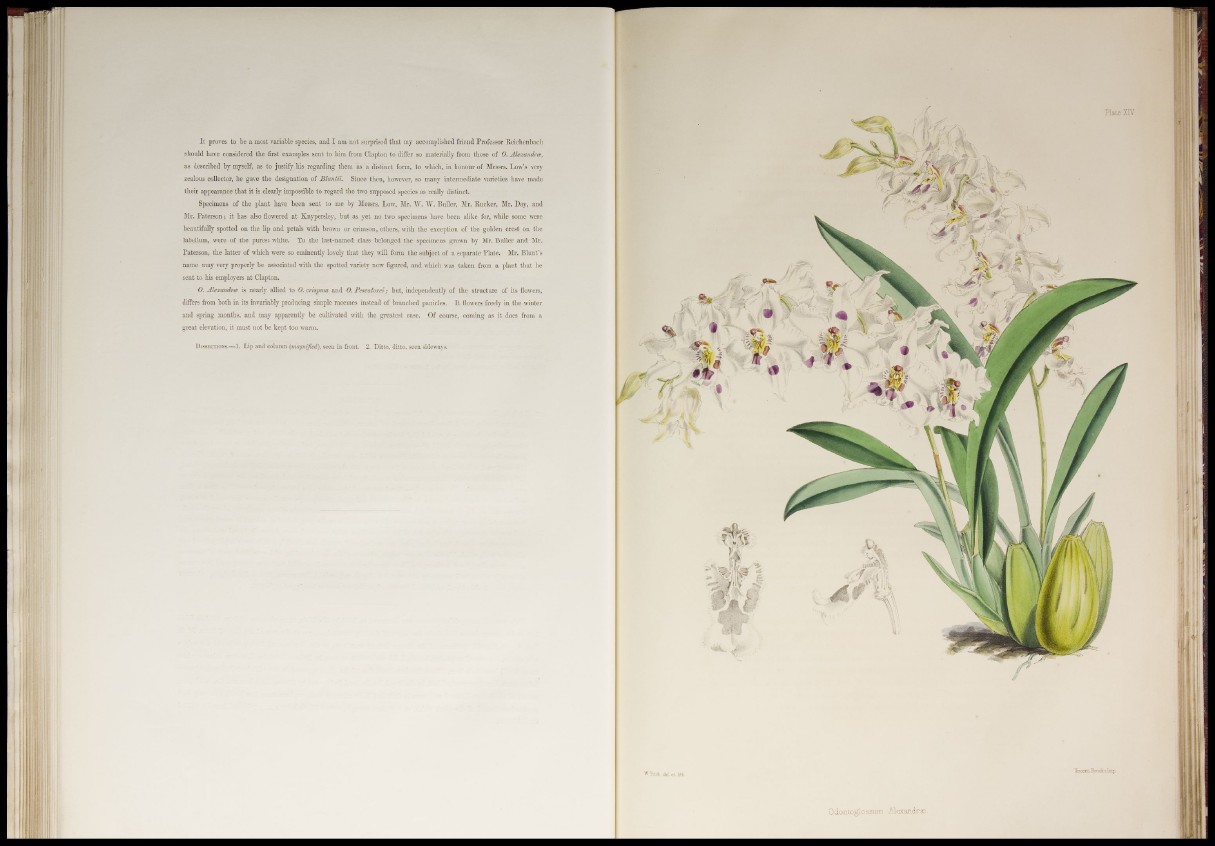
It proves to be a most variable species, and I am not surprised that my accomplished friend Professor Beichenbach
should have considered the first examples sent to him from Clapton to differ so materially from those of 0. Alexandra,
as described by myself, as to justify his regarding them as a distinct form, to which, in honour of Messrs. Low's very
zealous collector, he gave the designation of Bluntii. Since then, however, so many intermediate varieties have made
their appearance that it is clearly impossible to regard the two supposed species as really distinct.
Specimens of the plant have been sent to me by Messrs. Low, Mr. W. "W. Buller, Mr. Rucker, Mr. Day, and
Mr. Paterson; it has also flowered at Knypersley, but 83 yet no two specimens have been alike for, while some were
beautifully spotted on the hp and petals with brown or crimson, others, with the exception of the golden crest on the
labellum, were of the purest white. To the last-named class belonged the specimens grown by Mr. Buller and Mr.
Paterson, the latter of which were so eminently lovely that they will form the subject of a separate Plate. Mr. Blunt's
name may very properly be associated with the spotted variety now figured, and which was taken from a plant that he
sent to his employers at Clapton.
O.Alexandra! is nearly allied to O.crispum and 0. Pescatorei; but, independently of the structure of its flowers,
differs from both in its invariably producing simple racemes instead of branched panicles. It flowers freely in the winter
and spring months, and may apparently be cultivated with the greatest ease. Of course, coming as it does from a
great elevation, it must not be kept too warm.
DISSECTIONS.—1. Lip and column (magnified), seen in front. 2. Ditto, ditto, seen sideways.